Which of the following processes are types of post translational protein modification information
Home » modification » Which of the following processes are types of post translational protein modification informationYour Which of the following processes are types of post translational protein modification images are ready. Which of the following processes are types of post translational protein modification are a topic that is being searched for and liked by netizens today. You can Get the Which of the following processes are types of post translational protein modification files here. Download all royalty-free vectors.
If you’re searching for which of the following processes are types of post translational protein modification pictures information connected with to the which of the following processes are types of post translational protein modification interest, you have visit the right blog. Our site always gives you hints for viewing the highest quality video and picture content, please kindly surf and find more enlightening video articles and images that match your interests.
Which Of The Following Processes Are Types Of Post Translational Protein Modification. Protein splicing is a post-translational modification process in which an internal protein segment an intein excises itself from a surrounding external protein which it ligates to form the mature extein. Post-translational modification PTM refers to the covalent and generally enzymatic modification of proteins following protein biosynthesis. Carboxylation of glutamate for increased calcium sequestration 6. Glycosylation adding sugars to proteins 3.
 Post Translational Modification Ptm Antibodies From rockland-inc.com
Post Translational Modification Ptm Antibodies From rockland-inc.com
Glycosylation adding sugars to proteins 3. Types of post-translational modification. Common modifications include phosphate groups methyl acetate and amide groups. Post translational modifications or PTMs are involved in modifying the protein structure after they have been translated according to information on the mRNA. Previous question Next question. Carboxylation of glutamate for increased calcium sequestration 6.
Other proteins will be glycosylated - a sugar will be added.
Glycosylation adding sugars to proteins 3. Another common post-translational modification is cleavage or linking of parts of the protein itself. Phosphorylation alters the structural conformation of a protein causing it to become activated deactivated or modifying its function. Post-translational modification PTM refers to the covalent and generally enzymatic modification of proteins following protein biosynthesis. In the human body these PTMs increases the diversity and accuracy of proteins. Common modifications include phosphate groups methyl acetate and amide groups.
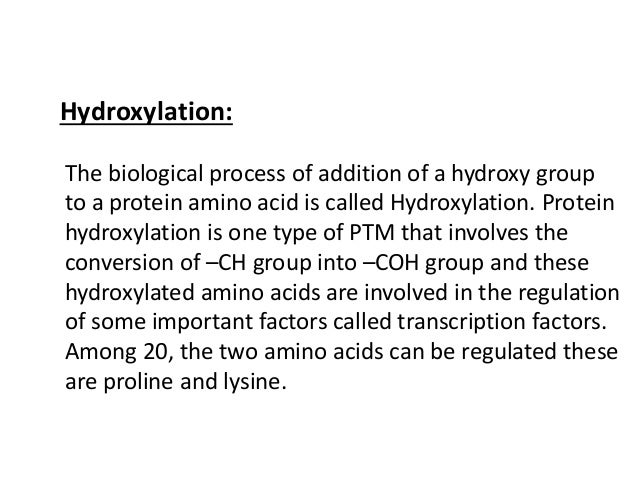 Source: slideshare.net
Source: slideshare.net
A kinase is the. Glycosylation adding sugars to proteins 3. These modifications include phosphorylation glycosylation ubiquitination nitrosylation methylation. Common modifications include phosphate groups methyl acetate and amide groups. Which of the following processes is an example of a post-translational modification.
 Source: news-medical.net
Source: news-medical.net
Which processes are types of post translational protein modification. Phosphorylation Which of the following steps occurs last in the initiation phase of translation. Another common post-translational modification is cleavage or linking of parts of the protein itself. Sulfation is a permanent post- translational modification needed for the functioning of the proteins. Which of the following processes is an example of a post-translational modification.
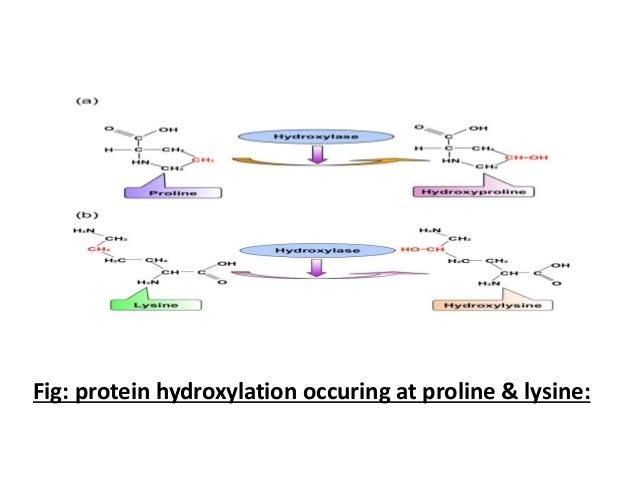 Source: slideshare.net
Source: slideshare.net
Physiological functions of glycoprotein glycans are important topics in postgenomic era. Another common post-translational modification is cleavage or linking of parts of the protein itself. Physiological functions of glycoprotein glycans are important topics in postgenomic era. Protein glycosylation is the most prominent among various types of post-translational protein modifications. Common modifications include phosphate groups methyl acetate and amide groups.
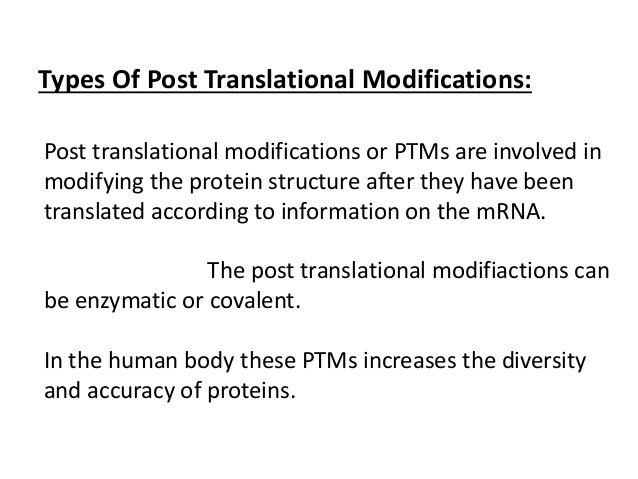 Source: slideshare.net
Source: slideshare.net
These modifications include phosphorylation glycosylation ubiquitination nitrosylation methylation. A kinase is the. Protein glycosylation is the most prominent among various types of post-translational protein modifications. Common modifications include phosphate groups methyl acetate and amide groups. They take place as soon as the growing peptide emerges in the ER and is exposed to modifying enzymes.
 Source: pnas.org
Source: pnas.org
Types Of Post Translational Modifications. What are the two most common methods of post translation modification of proteins. Protein splicing is a post-translational modification process in which an internal protein segment an intein excises itself from a surrounding external protein which it ligates to form the mature extein. Types of post-translational modification. A kinase is the.
 Source: cell.com
Source: cell.com
The post translational modifiactions can be enzymatic or covalent. Which of the following processes is an example of a post-translational modification. Another common post-translational modification is cleavage or linking of parts of the protein itself. Over 500 putative inteins ranging in length from 100 to 1650 residues have so far been identified in archaebacteria eubacteria single-celled eukaryotes and viruses. Phosphorylation is a post-translational modification of proteins in which an amino acid residue is phosphorylated by a protein kinase by the addition of a covalently bound phosphate group.
 Source: rockland-inc.com
Source: rockland-inc.com
Phosphorylation addition of phosphates 4. Phosphorylation alters the structural conformation of a protein causing it to become activated deactivated or modifying its function. Types of post-translational modification. Glycosylation adding sugars to proteins 3. Ubiquitination to designate proteins for degradation by the proteosome.
 Source: proteinwalls.blogspot.com
Source: proteinwalls.blogspot.com
A kinase is the. Another common post-translational modification is cleavage or linking of parts of the protein itself. Which of the following processes is an example of a post-translational modification. Types Of Post Translational Modifications. Types of post-translational modification.
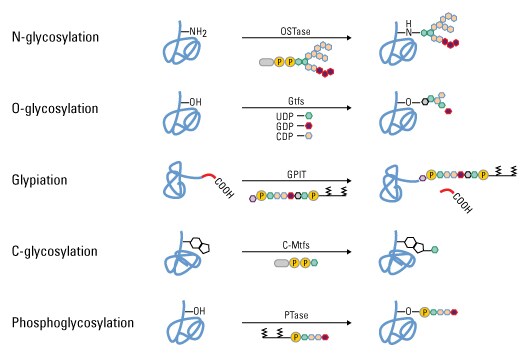 Source: thermofisher.com
Source: thermofisher.com
Phosphorylation Which of the following steps occurs last in the initiation phase of translation. Phosphorylation Which of the following steps occurs last in the initiation phase of translation. What are the two most common methods of post translation modification of proteins. Ubiquitination to designate proteins for degradation by the proteosome. Which of the following processes is an example of a post-translational modification.
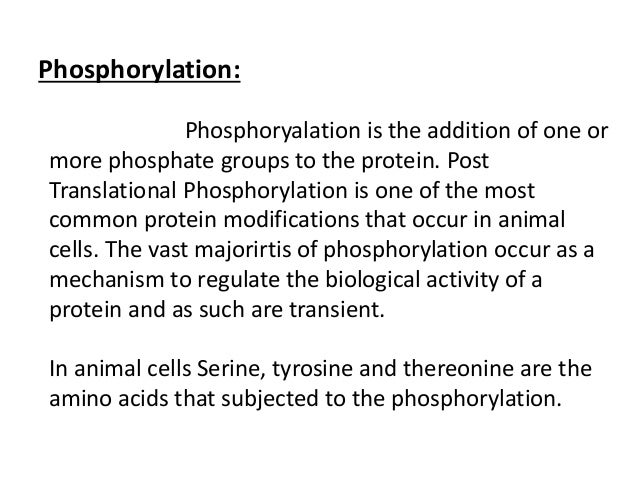 Source: slideshare.net
Source: slideshare.net
These modifications include phosphorylation glycosylation ubiquitination nitrosylation methylation. Ubiquitination to designate proteins for degradation by the proteosome. Acetylation and methylation of histone proteins 5. Other proteins will be glycosylated - a sugar will be added. Types of post-translational modification.
 Source: slideshare.net
Source: slideshare.net
Proteins are synthesized by ribosomes translating mRNA into polypeptide chains which may then undergo PTM to form the mature protein product. The post translational modifiactions can be enzymatic or covalent. More than 200 diverse types of PTMs are currently known 56 ranging from small chemical modifications eg phosphorylation and acetylation to the addition of complete proteins eg ubiquitylation Figure 3. Types Of Post Translational Modifications. Over 500 putative inteins ranging in length from 100 to 1650 residues have so far been identified in archaebacteria eubacteria single-celled eukaryotes and viruses.
 Source: cell.com
Source: cell.com
A kinase is the. Types of post-translational modification. Which processes are types of post translational protein modification. Physiological functions of glycoprotein glycans are important topics in postgenomic era. They take place as soon as the growing peptide emerges in the ER and is exposed to modifying enzymes.
 Source: researchgate.net
Source: researchgate.net
This is often added to a serine tyrosine or threonine amino acid residue. Over 500 putative inteins ranging in length from 100 to 1650 residues have so far been identified in archaebacteria eubacteria single-celled eukaryotes and viruses. Protein splicing is a post-translational modification process in which an internal protein segment an intein excises itself from a surrounding external protein which it ligates to form the mature extein. These modifications include phosphorylation glycosylation ubiquitination nitrosylation methylation. Another common post-translational modification is cleavage or linking of parts of the protein itself.
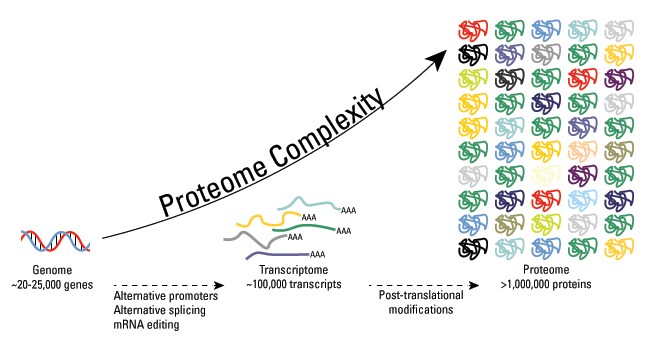 Source: thermofisher.com
Source: thermofisher.com
Sulfation is a permanent post- translational modification needed for the functioning of the proteins. They take place as soon as the growing peptide emerges in the ER and is exposed to modifying enzymes. More than 200 diverse types of PTMs are currently known 56 ranging from small chemical modifications eg phosphorylation and acetylation to the addition of complete proteins eg ubiquitylation Figure 3. Physiological functions of glycoprotein glycans are important topics in postgenomic era. More than 200 diverse types of PTMs are currently known 56 ranging from small chemical modifications eg phosphorylation and acetylation to the addition of complete proteins eg ubiquitylation Figure 3.
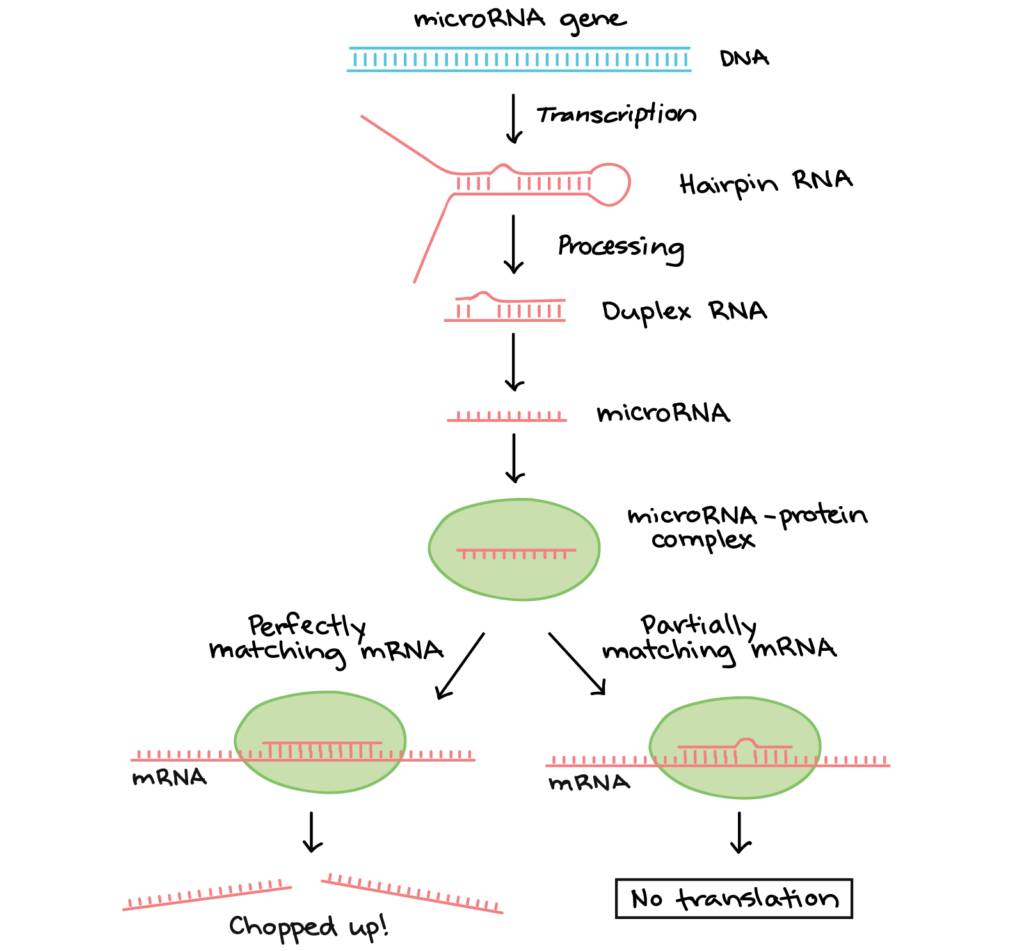 Source: courses.lumenlearning.com
Source: courses.lumenlearning.com
More than 200 diverse types of PTMs are currently known 56 ranging from small chemical modifications eg phosphorylation and acetylation to the addition of complete proteins eg ubiquitylation Figure 3. Ubiquitination to designate proteins for degradation by the proteosome. B Post-translational modifications play important roles in diverse cell functions as intracellular signaling phosphorylation regulation of protein stability ubiquitination regulation of transcription histone acetylation and methylation and cell surface signaling glycosylation. Which of the following processes is an example of a post-translational modification. 100 28 ratings Post translational modification events include Phosporylation Glycosylation and Ubiquitination Phosphorylation The most important post translational modification is Phosporylation of serine threo view the full answer.

This is often added to a serine tyrosine or threonine amino acid residue. Some proteins typically targeted to membranes will be lipidated - a lipid will be added. Types Of Post Translational Modifications. More than 200 diverse types of PTMs are currently known 56 ranging from small chemical modifications eg phosphorylation and acetylation to the addition of complete proteins eg ubiquitylation Figure 3. These modifications include phosphorylation glycosylation ubiquitination nitrosylation methylation.

Types Of Post Translational Modifications. Another common post-translational modification is cleavage or linking of parts of the protein itself. Which processes are types of post translational protein modification. B Post-translational modifications play important roles in diverse cell functions as intracellular signaling phosphorylation regulation of protein stability ubiquitination regulation of transcription histone acetylation and methylation and cell surface signaling glycosylation. Sulfation is a permanent post- translational modification needed for the functioning of the proteins.
 Source: youtube.com
Source: youtube.com
Ubiquitination to designate proteins for degradation by the proteosome. What are the two most common methods of post translation modification of proteins. Glycosylation adding sugars to proteins 3. The post translational modifiactions can be enzymatic or covalent. B Post-translational modifications play important roles in diverse cell functions as intracellular signaling phosphorylation regulation of protein stability ubiquitination regulation of transcription histone acetylation and methylation and cell surface signaling glycosylation.
This site is an open community for users to share their favorite wallpapers on the internet, all images or pictures in this website are for personal wallpaper use only, it is stricly prohibited to use this wallpaper for commercial purposes, if you are the author and find this image is shared without your permission, please kindly raise a DMCA report to Us.
If you find this site adventageous, please support us by sharing this posts to your own social media accounts like Facebook, Instagram and so on or you can also save this blog page with the title which of the following processes are types of post translational protein modification by using Ctrl + D for devices a laptop with a Windows operating system or Command + D for laptops with an Apple operating system. If you use a smartphone, you can also use the drawer menu of the browser you are using. Whether it’s a Windows, Mac, iOS or Android operating system, you will still be able to bookmark this website.
Category
Related By Category
- Leatherman modification ideas
- Organizational behavior modification theory ideas
- Seamoth modification station location information
- Custody modification reasons information
- Kak shockwave modification information
- Subnautica cant place vehicle modification station information
- Loan modification while in chapter 13 information
- Behavior modification is based upon the principles of rewards and punishments advanced by ideas
- Modification lawyer information
- Z4 modification information